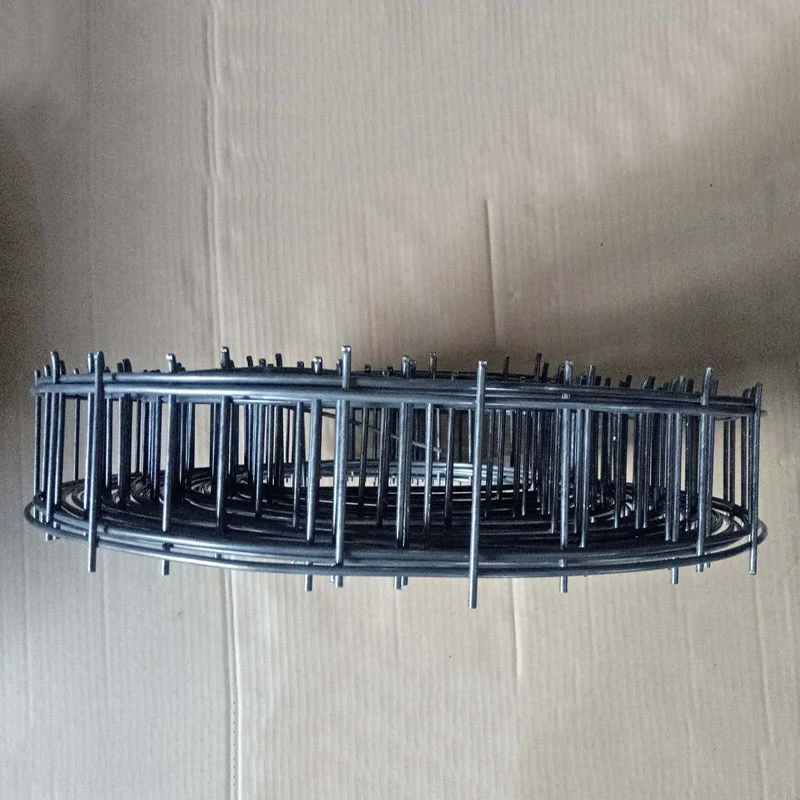-
+86 15030157877
-
sales@galvanizedmetalmesh.com
Dic . 15, 2024 11:32 Back to list
Custom 2mm Galvanized Steel Wire for Versatile Applications and Durability
Understanding Custom Galvanized Steel Wire A Comprehensive Guide
Galvanized steel wire plays a crucial role in various industries, thanks to its durability and resistance to corrosion. Specifically, custom galvanized steel wire of 2mm thickness has garnered attention for its versatility and wide range of applications. This article delves into the properties, manufacturing process, and uses of 2mm custom galvanized steel wire while highlighting its significance in both industrial and commercial sectors.
What is Galvanized Steel Wire?
Galvanized steel wire is steel wire that has undergone a galvanization process, which involves coating it with a layer of zinc. This coating protects the steel from rust and corrosion, significantly extending its lifespan. Galvanization can be achieved through different methods, such as hot-dipping and electro-galvanization. The resulting galvanized steel wire boasts improved mechanical properties and resistance to various environmental factors.
Specifications and Features
The 2mm diameter of custom galvanized steel wire offers a perfect balance between flexibility and strength. Customization means that manufacturers can tailor the wire's specifications according to the client's needs, such as varying lengths, tensile strength, and coating thickness. This adaptability makes it suitable for a wide array of applications.
One of the standout features of 2mm galvanized steel wire is its resistance to atmospheric conditions and chemical exposure. It can withstand various environments, whether they are humid or involve exposure to aggressive chemicals, making it ideal for outdoor applications. The zinc coating creates a sacrificial barrier, which means that even if the coating is scratched, the underlying steel is still protected from oxidation.
Manufacturing Process
The manufacturing of custom galvanized steel wire typically involves several key steps
1. Wire Drawing The process begins with drawing steel rods through a series of dies to achieve the desired thickness. In this case, the final product is a 2mm wire.
2. Cleaning The drawn wire is then cleaned to remove any oils, dirt, or oxides. This step is critical as it ensures proper adhesion of the zinc coating during the galvanization phase.
custom galvanized steel wire 2mm

3. Galvanization The cleaned wire is submerged in molten zinc if using the hot-dip galvanization method. This process ensures that the zinc bonds strongly to the steel surface, providing effective corrosion resistance.
5. Quality Control Before it is shipped to clients, the custom galvanized steel wire undergoes rigorous testing for strength, flexibility, and coating thickness to ensure it meets all specified standards.
Applications of 2mm Custom Galvanized Steel Wire
Custom galvanized steel wire has a myriad of applications across various sectors
- Construction It's widely used in reinforcing concrete, providing structural support in buildings and infrastructure projects.
- Agriculture Farmers often utilize this wire for fencing, trellising plants, and securing livestock, due to its durability outdoors.
- Manufacturing Many industries employ galvanized steel wire for making products such as springs, wire ropes, and mesh products. Customization further allows businesses to design solutions that meet specific operational needs.
- Craft and DIY For hobbyists and small project builders, custom galvanized steel wire offers an excellent option for crafting and decorative purposes, combining aesthetic appeal with strength.
Conclusion
In conclusion, 2mm custom galvanized steel wire represents a vital component in modern manufacturing and construction. Its resilience, adaptability, and efficient protective coating make it a preferred choice for projects that require strength and durability in harsh conditions. As industries continue to evolve and seek sustainable practices, the demand for high-quality galvanized products, including steel wire, is expected to increase. Understanding the properties and applications of this versatile material can help businesses make informed decisions that ensure the longevity and reliability of their projects.
-
Premium Black Brick Welded Mesh - High Strength & Corrosion Resistant
NewsJul.21,2025
-
AI SEO Optimizer
NewsJul.20,2025
-
High-Quality Chicken Wire Panels Leading Manufacturer & Exporter
NewsJul.08,2025
-
High-Quality Concrete Reinforcement Wire Mesh – Reliable Steel Mesh Manufacturers & Exporters
NewsJul.08,2025
-
High-Quality Aluminum Expanded Mesh Leading Manufacturers & Exporters
NewsJul.08,2025
-
High-Quality Perforated Stainless Steel Sheet Manufacturer & Exporter Custom Sizes Available
NewsJul.07,2025



